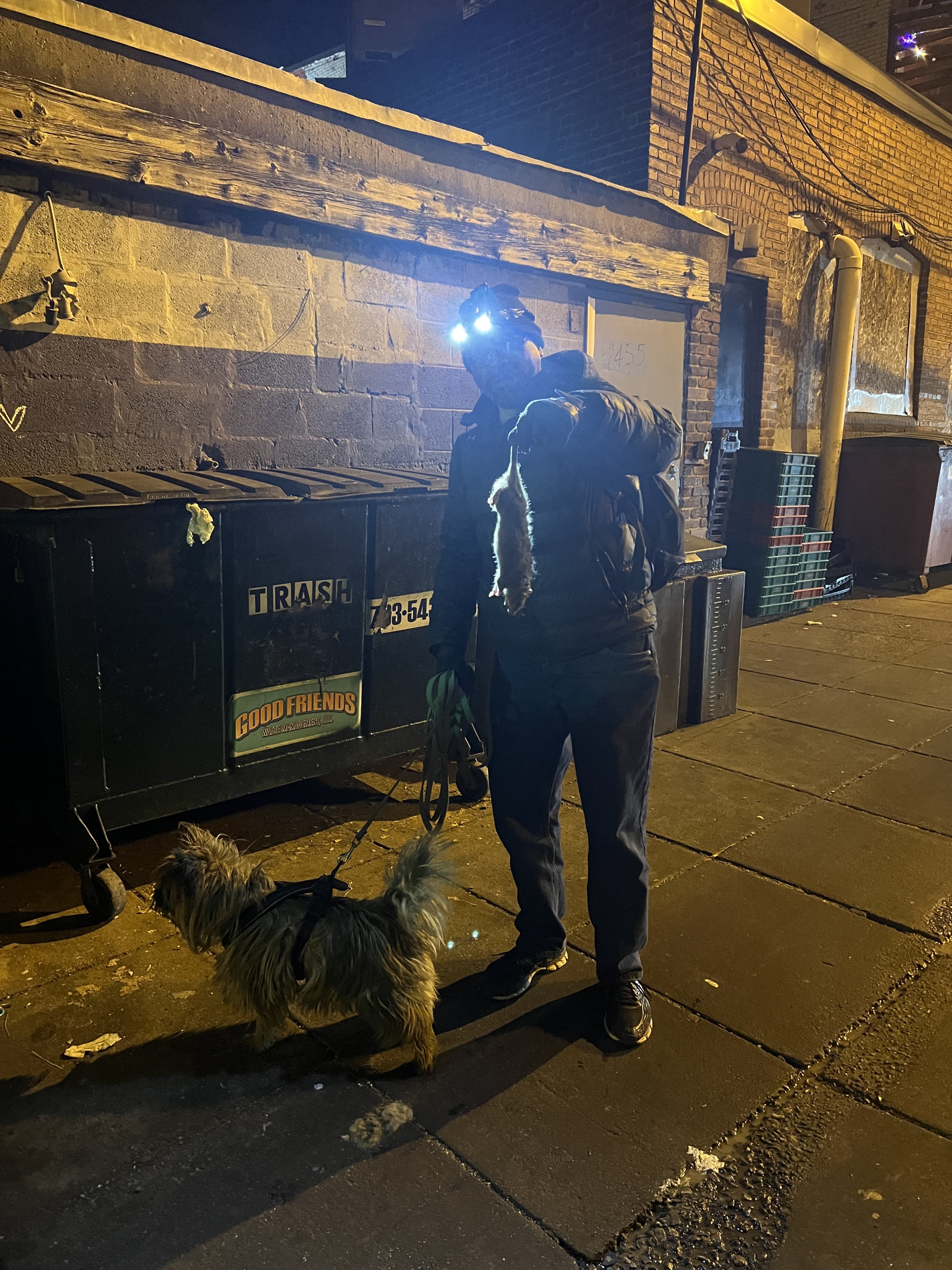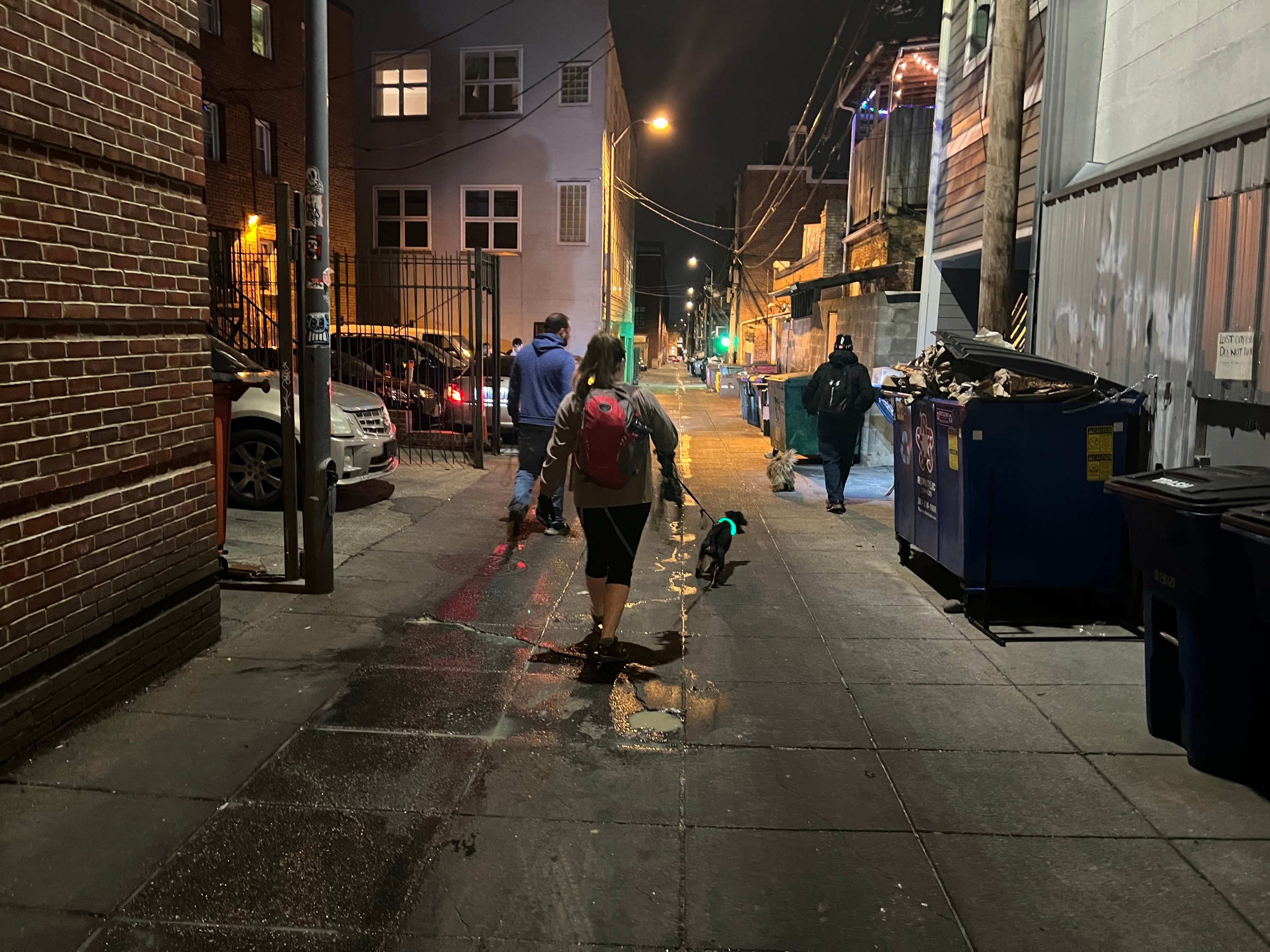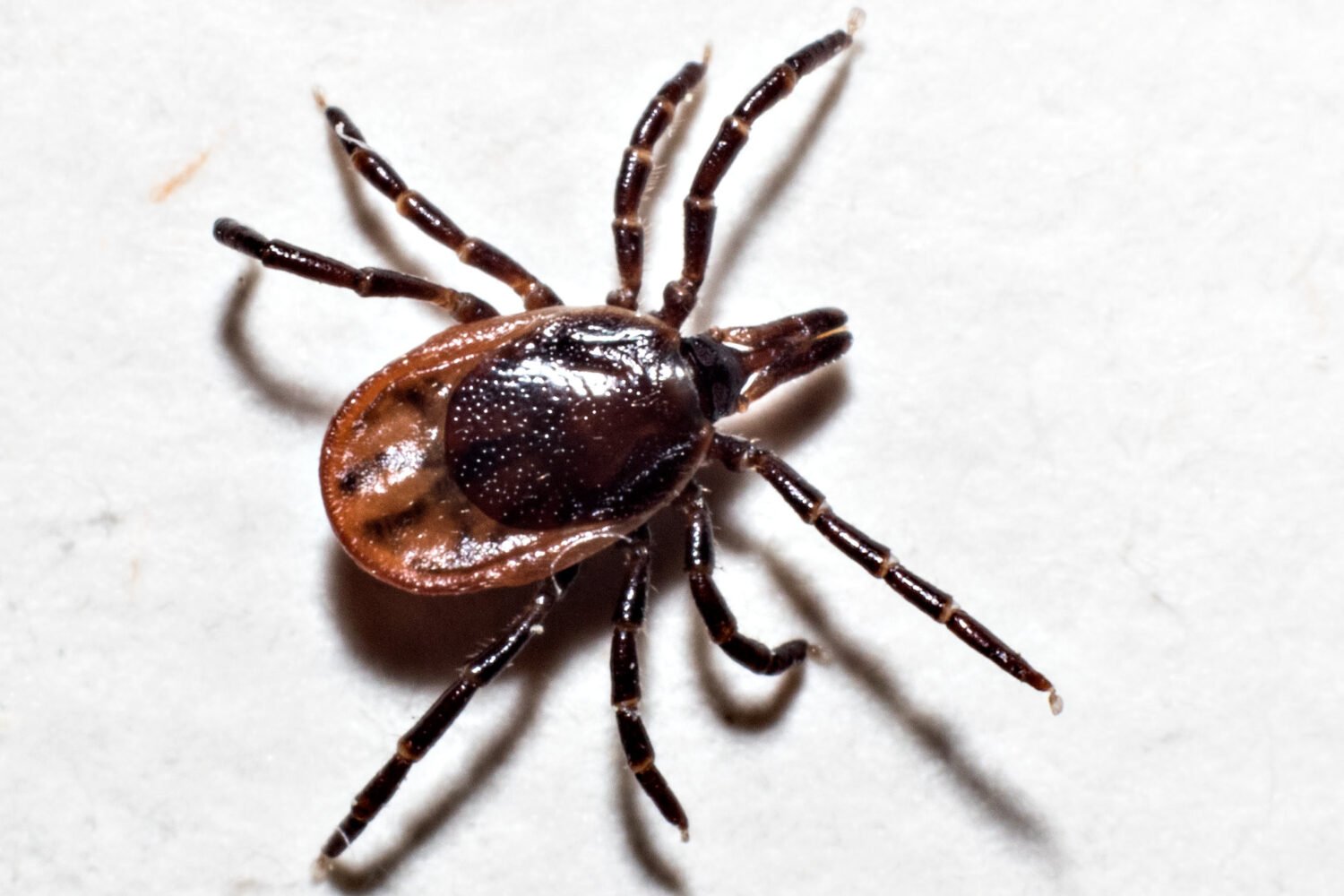On a typical Saturday night on 18th Street in Adams Morgan, you’ll find 30-somethings having drinks at The Green Zone and college kids flocking to Shenanigans for power hour. And in the alleys behind the neighborhood’s many bars and restaurants, you’ll find a group of dog owners hunting down rats until the wee hours.
Bomani Mtume, 60, is a retired police officer who now works security for a government contractor. He says his 22-month-old cairn terrier, Bartholomew (“Barto” for short), can’t go without a weekly hunt. About six months ago, Mtume and Barto started trekking from a suburb north of Baltimore to join a Georgetown rat-hunting group. Recently, Mtume and a few others branched off to find a new rat-infested neighborhood and meet on a more consistent schedule. Gerard Brown, manager of rodent and vector control at the DC Department of Health, pointed him towards Adams Morgan.
Now, Mtume and his crew meet at 11 PM on Saturdays to embark on a two-hour hunt. The group includes 27-year-old dog trainer Marshall Feinberg and his greyhound-whippet-pitbull mix, Henry, along with 35-year-old HR professional Jennifer Scanlan and her jagdterrier, Fitz
“We do this for the dogs,” says Mtume. “The benefit is rat abatement for wherever we hunt, but the dogs love this.”

Last Saturday, Barto kicked the night off with his first kill at 11:26 in an alley behind The Line Hotel. With excited yelps, Fitz and Barto “alerted” their owners of a rat behind a row of dumpsters. Fitz is smaller than the other two, so he scurried behind the dumpsters and pushed the rat towards the other dogs. Barto was at the ready a few feet ahead. Henry was patiently waiting a few feet past him, just in case the rat escaped Barto’s reach. It didn’t.
This strategy was consistent through the evening, but each dog did manage to tally up their own kills. Most of the time, the dogs eliminate rats by furiously shaking their bodies to break their necks, but other times they’ll go for the simpler method of just “crushing” the rats, Feinberg says.
None of the three dogs were actually trained to hunt–they’re driven solely by intuition. True to name, rat terriers—and many other breeds—have a natural prey drive.
“[Fitz] can be a cuddlebug,” Scanlan says. “But once it’s nighttime, he knows that’s when the rats are out and it’s like a Dr. Jekyll/Mr. Hyde situation. He’s single-minded to the point of recklessness.”
Though the idea of a dog shaking a rat to death may seem cruel, Feinberg says it’s a better alternative to poison. “It takes five days for a rat to die from poisoning, it takes less than five seconds for my dog to kill a rat.” And with rat numbers sky high in DC, all of the people who walked by expressed appreciation to the group. One police officer even stopped to say “thank you for your service.”

With the first alley complete and a handful of kills under their belt, the crew headed up to Marie Reed Elementary School to search trash bags left outside. Unfortunately, a distracted Fitz let one rat scurry past. “He totally missed it,” Scanlan said. “Okay, next time pull him back further,” Feinberg reassured her. “You just gotta center him.”
Feinberg has been hunting with his dogs for the longest of the three, and even joined the internationally known New York City rat-hunting group on occasion. Scanlan, who is vegetarian and kept pet rats when she was 10 years old, has only been out five times. Throughout the hunt, Feinberg offered tips on where and when to move for the most effective catch.
Eventually, Mtume suggested they start going through the dumpsters themselves. Everyone agreed and he lowered Barto into a dumpster. Mtume moved garbage bags to give Barto a better shot, and he went in for the kill. Two more rats down. In another alley, Mtume lowered Fitz into a dumpster in view of Andy’s Pizza for his first dumpster kill. Some days they can spend two hours just killing rats in dumpsters–that’s how many are in there, Mtume says.
The owners come prepared with first-aid kits in case of an emergency–which are rare, Feinberg says. Scanlan also regularly waxes Fitz’s paws to protect his paws from cracking after a night of hunting. “Our dogs’ safety is very much the priority on these outings,” she says.

When the hunt ended at 1:15 AM, roughly 16 rats had been killed. With more practice in the neighborhood, Feinberg expects that number will continue to rise.
Though the crew operates alone, they have full approval from the Adams Morgan Business Improvement District (BID). When Mtume reached out to executive director Kristen Barden about letting his dog hunt rats in the neighborhood for free, her only response was “Awesome!” The team’s only ask: free parking.
There are companies that use dogs to hunt rats for neighborhoods or private property owners, like Unique Pest Management, but those services are too costly for the BID. Mtume, Feinberg, and Scanlan don’t really care too much about keeping the rat population down, they just want to exercise their dogs.
The group has faced some criticism. One person told Scanlan they disapproved of reinforcing hunting behavior. Representatives for the Humane Rescue Alliance sent a statement to Washingtonian, saying “killing rodents this way is extremely inhumane.” Instead, they endorse their own program, Blue Collar Cats, which “employs” outdoor cats that aren’t suitable for adoptive homes to help with rodent management.
But Scanlan adds: “With this type of dog, it’s in its blood.”
“It’s what they get joy out of,” says Feinberg.
Any dog owner interested in hunting with their dogs can email bomanimtume@gmail.com.



















